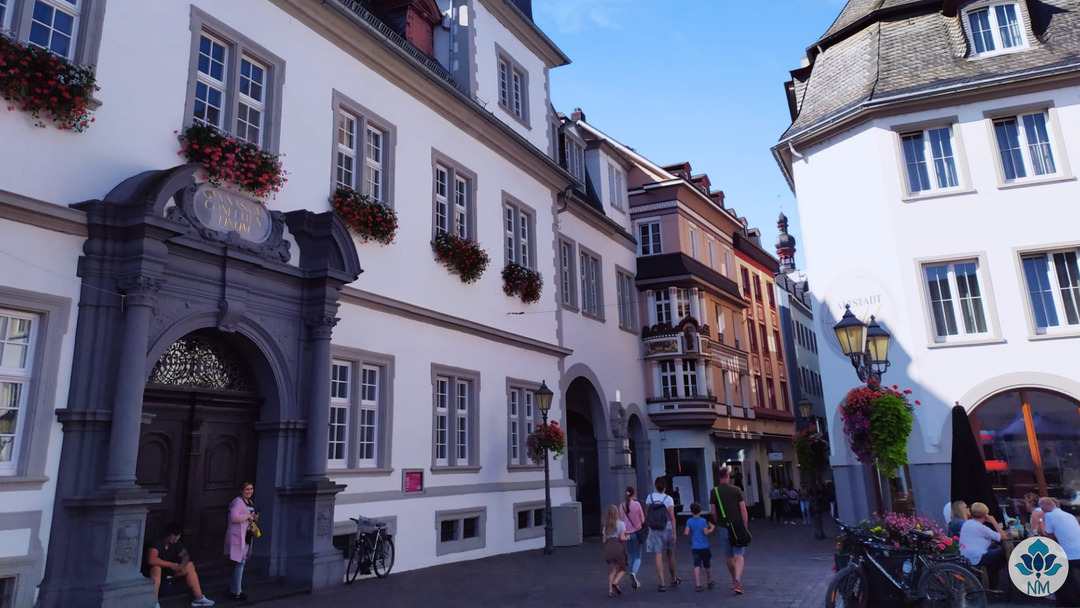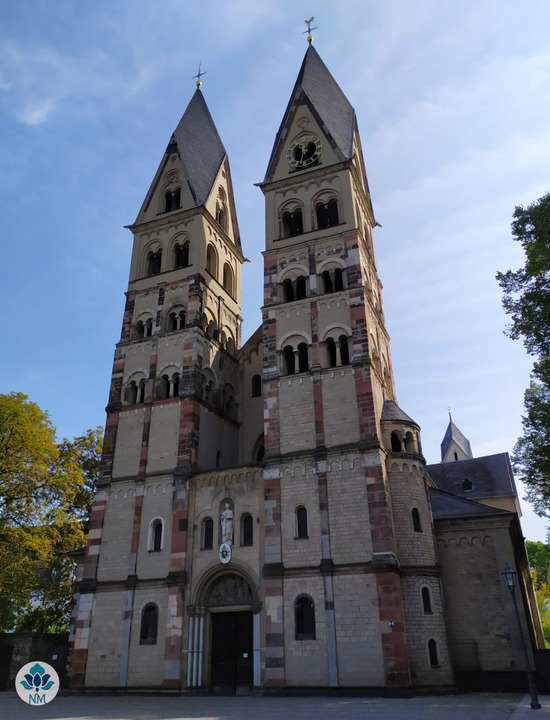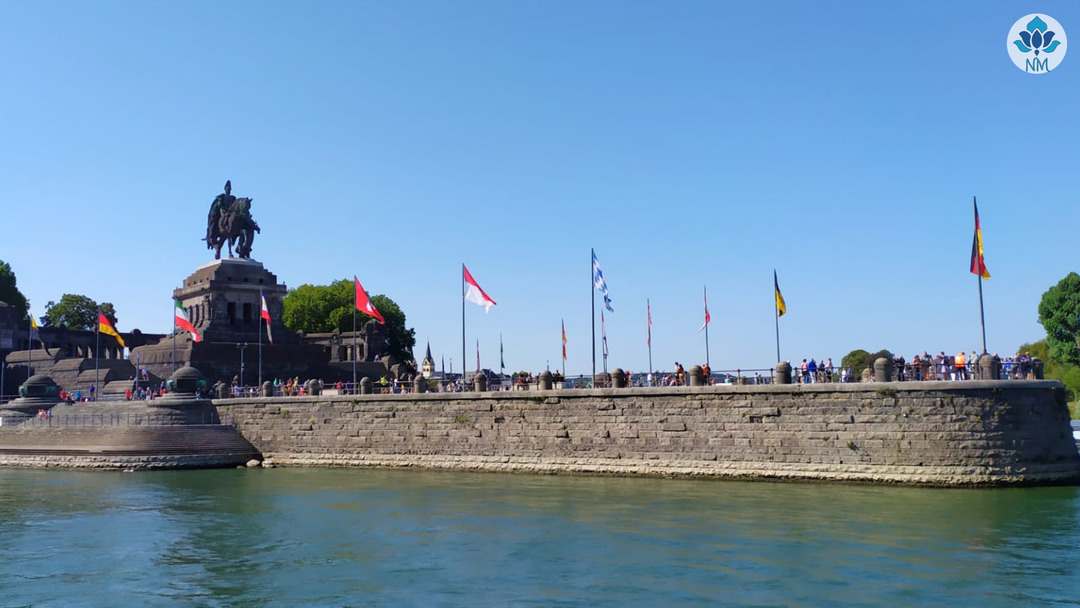Koblenz, Germany | Magical Cities on the Romantic Rhine

Koblenz, Germany
This time we are going to talk about Koblenz, a German city that owes its name to its location, as it is situated at the confluence of the Rhine and Moselle rivers. Located in the federal state of Rhineland-Palatinate, it is one of the oldest German towns, in particular the celebration of its 2000th anniversary took place in 1992.
Where is Koblenz?
Koblenz is located in the north of the state of Rhineland-Palatinate and is easily accessible by train. There are direct and frequent trips from Cologne (1.10 hours, 100km), Bonn (40 min, 60km) Mainz (1 hour, 100km) and Frankfurt (1.30 hours, 130km). Below you will find a widget with which you can evaluate different options on how to get to Koblenz from any other city. In particular, we always prefer to use public transport, especially the German one, which is efficient, clean and accessible. The Deutsche Bahn (DB), which is the main railway company in Germany, offers Regional Tickets that allow you to combine different means of public transport for one or more people across Germany. Finally, another option could be to rent a car and enjoy the versatility of this means of transport to visit not only Koblenz, but also some of the numerous fairytale villages around it.
What to see in Koblenz?
Its historic centre, or Altstadt in German, is criss-crossed by numerous cobbled alleyways where it is easy to get lost. But it is not only these details that make Koblenz an incredible city, but also its numerous monuments and activities waiting to be discovered. In this section we present a list of the top attractions in Koblenz:
-
Town Hall (Rathaus): built in the 17th century in Renaissance style, it was a former Jesuit college. The town hall has been housed in this building since 1895 and has survived both world wars.
-
The four towers of Koblenz (Vier Türme): is a group of four historic buildings in the old town, built between 1689 and 1692, which were severely damaged during the Second World War. They were rebuilt and restored between the 1950s and 1970s.
-
Church of Our Lady (Liebfrauenkirche): The beginnings of this Catholic church, which stands on the highest point of the old town, date back to the 5th century. From the end of the Middle Ages until the French Revolution it was the main parish church in Koblenz.
-
The old castle (Alte Burg): built around 1185, it originates from an old defensive tower from Roman times. It was later used as the fortified residence of the archbishop of Trier and today houses the historical archive of the city of Koblenz.
-
St. Florin's Church (Florinskirche): erected around 1100, it belonged to the Monastery of St. Florin of the Canons and in 1820 it was the first evangelically consecrated church in the city. As a curious fact, a cannonball was inserted over the baptismal font in one of its reconstructions to remind visitors of the destruction of the city.
-
Basilica of St. Castor (Basilika St. Kastor): this is a Catholic church whose construction was completed in the first half of the 9th century by order of the Archbishop of Trier, although its present appearance dates from the 12th and 19th centuries. It is the oldest church in the city.
-
The German Corner (Deutsches Eck): this is the name of the peninsula formed by the mouth of the Moselle River in the Rhine. It is well known for the sculpture of Wilhelm I, erected in 1897, who was the first emperor of the German Empire and who also played a key role in the unification of Germany. This corner is one of the most visited places by tourists.
-
Ehrenbreitstein Fortress (Festung Ehrenbreitstein): the second largest fortress in Europe, it was built between 1817 and 1828. It was later rebuilt to form part of a military system to protect the Upper Middle Rhine Valley and has since become the great fortress we see today. It is now owned by the state of Rhineland-Palatinate and houses the Landesmuseum Koblenz, a youth hostel, the Army Monument and various administrative offices. In 2002 it was awarded the Unesco World Heritage Site status of the "Upper Middle Rhine Valley".
-
The Electoral Palace (Kurfürstliches Schloss): this was the residence of the last archbishop and elector of Trier at the end of the 18th century. In the mid-19th century, the Prussian crown prince (later Emperor Wilhelm I) had his official residence here during his years as governor. Although it was almost completely destroyed during World War II, it was later restored. Today it houses various federal government offices.
-
Weindorf: the wine village was created on the occasion of the imperial exhibition "German Wine", which took place in 1925. At that time, four buildings were erected, each inspired by the typical houses of winegrowers from different German regions. Unfortunately, the wine village was destroyed during the Second World War, but was later rebuilt in 1951.



Finally we leave you the interactive map of Koblenz, from where you can easily find the location of each point of interest. Furthermore, by clicking on the markers you can go directly to the paragraph containing the corresponding information about that place. Moreover, if you allow us to get your geographical location by clicking on the button below the map, you can also see your position and thus find the points of interest more easily (reverse search provided by LocationIQ.com).
Accomodation in Koblenz
The city is perfect for a day trip, but if you'd rather enjoy more of the parks, wander the magical streets, take a boat trip and visit the museums, we recommend at least two. We chose to visit other cities in the area as well, particularly Bacharach and Limburg on the Lahn, which is why we stayed two nights in Koblenz. We stayed at The CYCLER Mosel Apartment, a very comfortable, clean and conveniently located flat with excellent access to public transport. To evaluate other accommodation options, please visit this link.
Further information?
Here is our video of Koblenz (with English subtitles). If for some reason you encounter any problems with the playback, from here you will be able to watch it directly from our YouTube channel.
Thank you very much for making it to the end of this article. If you liked it, don't forget to share it on your social networks by clicking on the icons below and to subscribe to our YouTube channel. See you next time!



